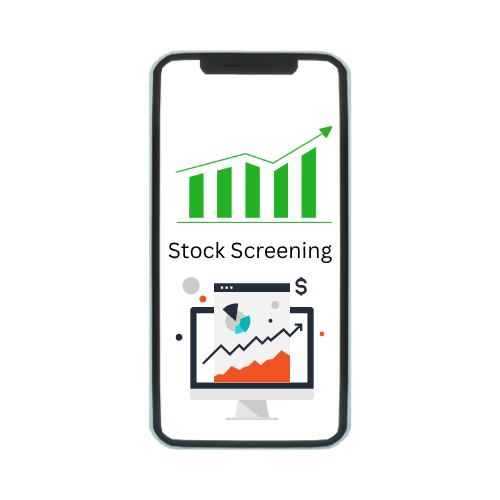Analysing the balance sheet?
An essential financial statement that gives a quick overview of a company’s finances is the balance sheet. For an analyst, it is very important to know the context and importance of analysing the balance sheet. The balance sheet is divided into two columns, each of which balances the other to provide a net of zero. The itemized assets of a company are listed on the left side, divided into long-term and short-term assets.
Liabilities and shareholders’ equity for a company are located on the right side, which is also divided into long-term and short-term equity. When assets are deducted from liabilities, equity is what remains.
Balance sheet ratios?
We may explore several methods used to assess the data in a balance sheet now that we have a better knowledge of what a balance sheet is and how it is made. Analysis of financial ratios is the primary method.
Formulas are used in financial ratio analysis to shed light on a business’s operations. Financial ratios, such as the debt-to-equity (D/E) ratio, can give a solid understanding of the company’s financial situation and operational efficiency for a balance sheet. It is significant to keep in mind that certain ratios will require data from more than one financial statement, such as the balance sheet and the income statement.
How to analyze the balance sheet?
There are two main divisions on the balance sheet. The company’s obligations and shareholders’ equity are below the assets, to the right of them, while the assets are at the top or on the left. When the value of the assets equals the sum of the liabilities and shareholders’ equity, the balance sheet is likewise always in balance.
The assets and liabilities portions of the balance sheet are arranged within each section according to how current the account is. As a result, accounts on the asset side are often ranked from most liquid to least liquid. Short-term borrowings and other commitments are arranged from short to long-term in the accounting for the liabilities side.
The balance sheet of a business, usually referred to as a “statement of financial position,” lists the company’s assets, liabilities, and equity (net worth). The income statement, cash flow statement, and balance sheet combined form the foundation of any company’s financial statements.
It’s crucial to comprehend the form of a balance sheet, how to read one, and the fundamentals of balance sheet analysis whether you’re a corporate shareholder or prospective investment.
Balance sheet ratios?
In order to interpret a company’s results quantitatively, balance sheet ratios are used to compare two items on the balance sheet or analyze balance sheet items. This is a part of analysing the balance sheet. Financial ratios, such as the debt to equity ratio, liquidity ratios, such as the cash ratio, current ratio, and quick ratio, and efficiency ratios, such as the account receivable turnover, payable account turnover, and inventory turnover ratio are examples of these ratios.
Ratio analysis formula?
After understanding the balance sheet, it’s time to understand the introduction of ratio analysis. To learn more about the financial health of your company, we use balance sheet ratios. You can evaluate your financial situation using balance sheet ratios and the data from your balance sheet. By examining and using balance sheet ratios, you can learn more about your company.
Introduction of ratio analysis:
The following are only a few representative important balance sheet ratios:
- Current ratio
- rapid ratio
- Working money
- The ratio of debt to equity
- Solution ratio
What are balance sheet ratios?
After understanding balance sheet analysis ratios, and how to analyse the balance sheet, it’s time to understand ratio analysis all formulas:
Employing Money
The amount left over after deducting a company’s entire current liabilities from its total current assets is referred to as working capital. Cash and assets that are anticipated to generate cash within a year are included in current assets in the majority of sectors. Current liabilities are debts that are due in the near future.)
The working capital calculation formula is as follows:
Current Assets – Current Liabilities = Working Capital
Actual Ratio
The whole amount of a company’s current assets divided by the total amount of its current liabilities is known as the current ratio, also known as the working capital ratio. The current ratio is expressed as a formula as follows:
Current ratio is equal to Current Liabilities / Current Assets.
In general, the corporation is more likely to be able to pay its current liabilities when they become due the higher the ratio of current assets to current liabilities.
(Acid Test) Quick Ratio
The acid test ratio is another name for the quick ratio. Due to the exclusion of a company’s inventory and pre-paid expenses, the fast ratio is more cautious than the current ratio. Inventory and pre-paid expenses (cannot be promptly converted into cash, it is anticipated.)
Therefore, the whole amount of the company’s current liabilities is split simply by the amount of the company’s “quick” assets, which include cash, cash equivalents, short-term investments, and accounts receivable. The fast ratio is seen to be a stronger measure of a company’s capacity to pay its debts when they become due for companies with inventory (manufacturers, merchants, and distributors).
Ratio of Debt to Equity
The debt to equity ratio compares the total liabilities of an organization to the total equity owned by its owners. By dividing a company’s total liabilities by its total stockholder equity, the debt to equity ratio is determined.
Total Debt to Total Assets
Financial leverage is also shown by the debt to total assets ratio. This ratio illustrates the proportion of a company’s assets that were financed by debt or creditors. The business’s owners contribute the balance. A lower debt-to-assets ratio is generally preferable because it is thought that debt with smaller amounts of risk has less risks.




